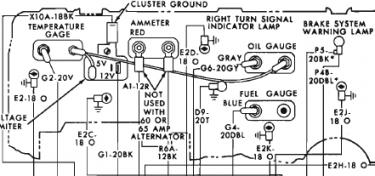USatC
Well-Known Member
Dropped my tank last week and noticed my sending unit had no line running from it (that would explain why the gauge doesn’t work). I was wondering if i could directly run a wire from the gauges to the sending unit. I tested the car with the ignition turned to on and i get no voltage out of the blue line. Is that expected?

















